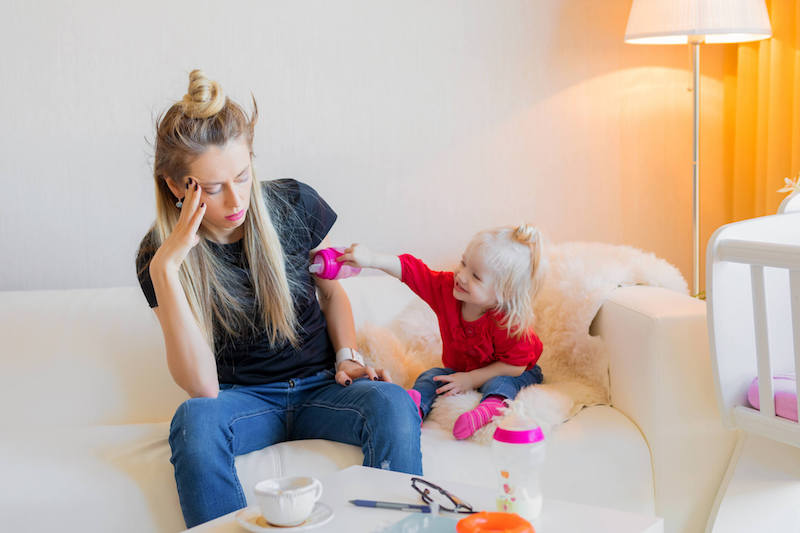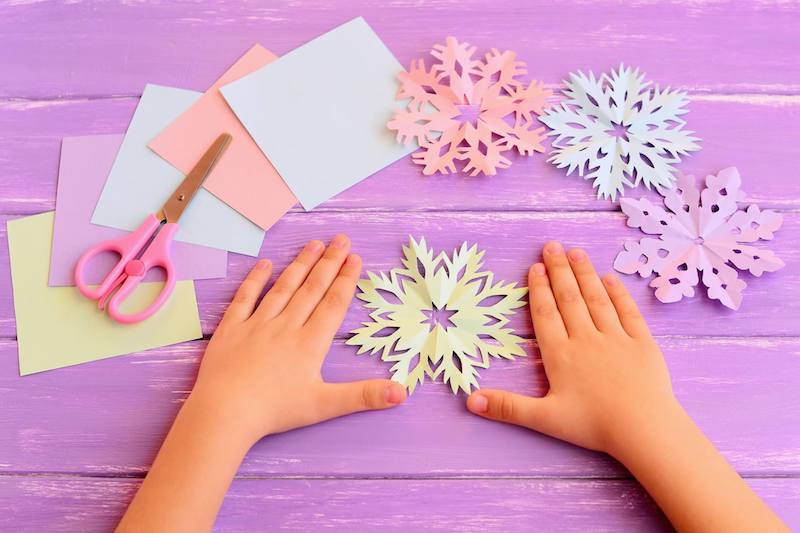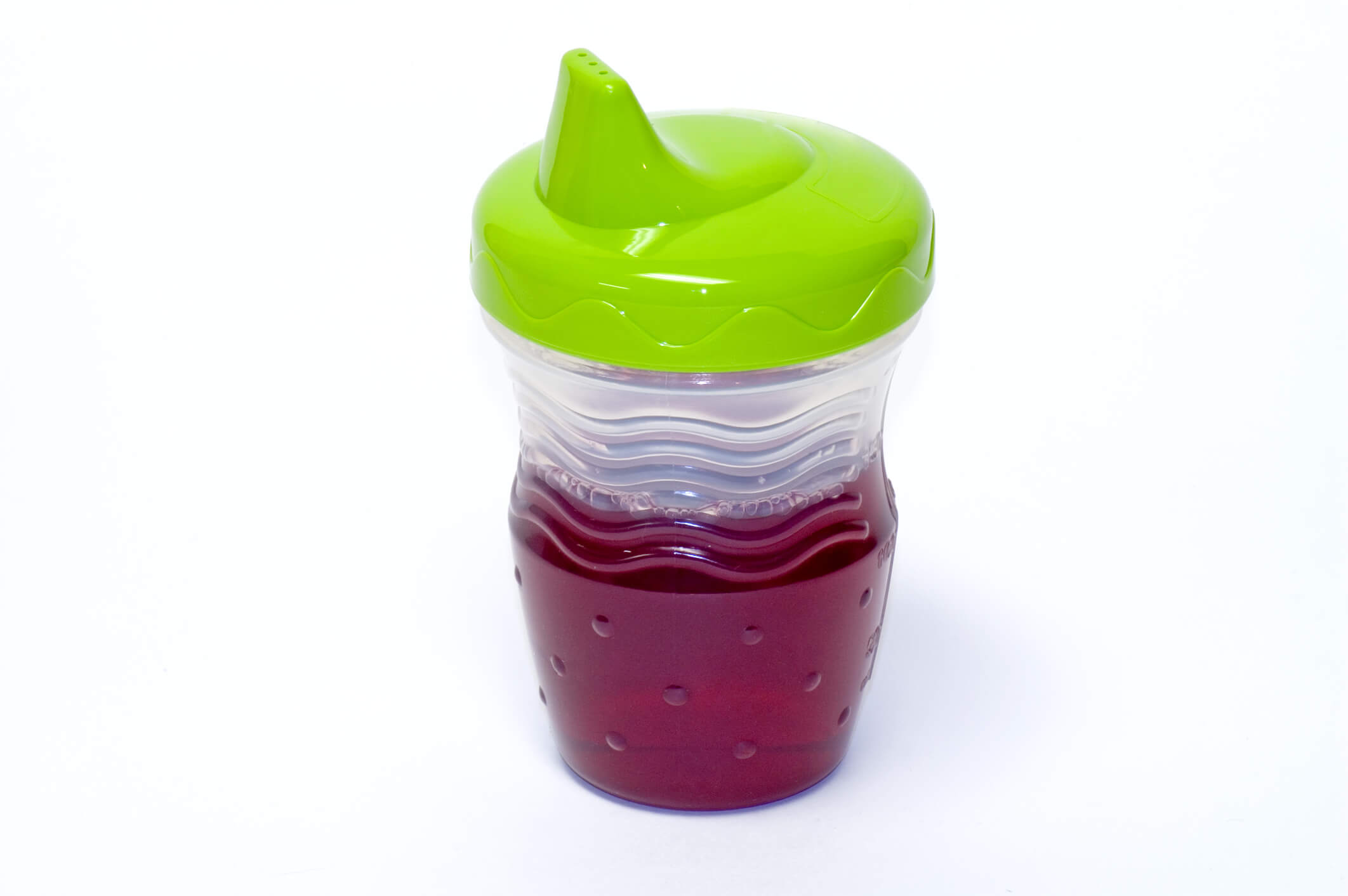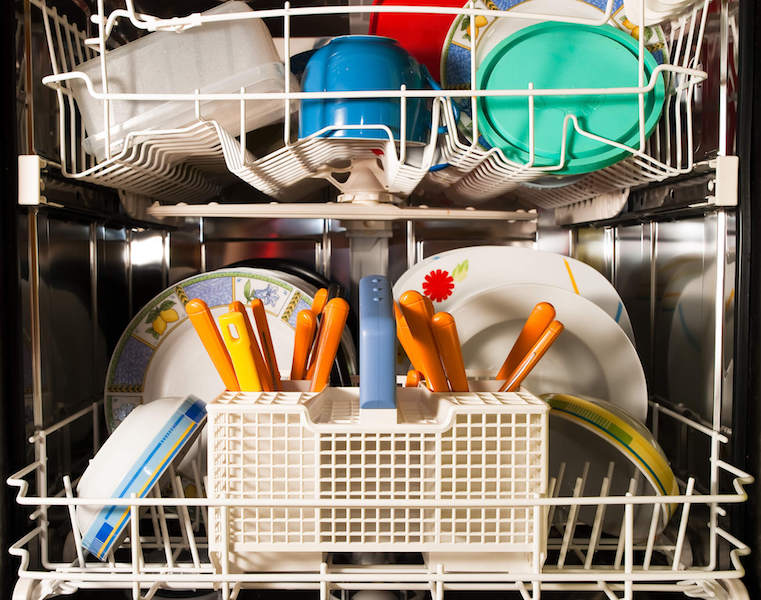Parenting is like being on a roller coaster. It’s both an exhilarating and terrifying ride. One second you’re laughing and the next you’re crying, squealing in joy, having a panic attack, fighting nausea, or saying a quick prayer that you’ll make it out alive. Weird how that analogy makes sense, right? But, it’s one of the most amazing experiences in the world. Being a parent is also stressful. You want to get every aspect right so that your child is healthy, happy, and living their best life. Sometimes, though, things like mold in sippy cups and bottles slip through.

It happens! Your days are spent cleaning, answering their million and one questions, laughing at the absurd things that come out of their mouths, getting them to eat their vegetables, enforcing a strict bedtime routine, and then cleaning again. It’s almost like mold spores know this and make the most out of any opportunity they can find to start growing and colonizing an area.
They don’t actually know the difference- they’re just sneaky and persistent. It doesn’t help that objects like sippy cups and bottles offer the absolute perfect conditions for them to start growing.
The issue, minus how yucky it is to drink mold particles, is that this level of exposure can trigger a long list of symptoms in your child. That's the exact thing we parents are always fighting to prevent!
Adding mold prevention and awareness is crucial to helping avoid sick children and mold in sippy cups and bottles. Even if it’s rarely talked about in all of those parenting books.
Why Mold Is A Problem
The truth is that reactions to mold are like snowflakes- no two are the same. Researchers are hard at work trying to figure out exactly how we humans react to exposure, but it’s a difficult subject to nail down. That’s probably why hasn’t been a huge focusing point in mainstream media. Factors like genetics, pre-existing conditions, level of mold exposure, and species of mold involved all play a role.

What we do know is that individuals with compromised immune systems and those with developing immune systems are at greater risk of experiencing symptoms faster and to a greater extent. Our children fall into this category, making it crucial that we parents actively work towards limiting exposure to this fungus. ¹’²’³’⁴
Whether ingested or inhaled, mold can trigger a wide range of icky symptoms in children who are exposed.
These can include:
- Coughing
- Stuffy Nose
- Vomiting
- Abdominal Cramps
- Digestive Issues
- Neurological Problems
- Respiratory Issues
- Rashes
- Difficulty Breathing
Again, the thing with mold exposure is that you just never know how the symptoms will present themselves which can make diagnosing the issue that much harder. What parents can look out for are symptoms that flare up while using the sippy cup or bottle, ongoing symptoms that never seem to get better, and symptoms that don’t alleviate after treatments like medication from the doctor.
As the exposure continues, their sickness will also go on. That’s why we as parents have to make sure that mold growth is not causing mayhem so our kids can live happy, healthy lives that are fungus-free.
What Is This Arch-Nemesis And Why Is There Mold In Sippy Cups and Bottles?
We know why parents have to wage war against mold growth, but let’s do a quick run-through of what we’re fighting.
Mold is a type of fungus with over 100,000 species identified so far. The media is hyper-focused on "black mold" and its ability to affect our health, but the truth is that any species of mold can trigger a reaction depending on an individual’s specific sensitivity to it. So, it’s best to remove and prevent any and all indoor mold growth.

All species of mold reproduce by creating microscopic spores that they release into the air.⁵’⁶ These tiny spores, similar to the seeds of a weed, ride the air current to wherever it leads: inside of cars, within a home, or throughout a forest. Your child probably comes into contact with a few of them throughout the day, but a couple of random spores shouldn’t cause an issue. Their immune systems will identify it as a foreign particle and immediately begin to get rid of it. The issue begins when one of these spores finds a cozy place inside of our homes. That spore will begin to grow and spread over that area while releasing more and more spores into the air. Some species of mold can also produce microscopic toxins called mycotoxins that are hazardous to our health.⁷
Exposure to this high number of mold particles throughout the day will eventually cause the immune system to get worn down and not be able to fight them off as easily. Cue the door opening for all of those symptoms we’re looking to avoid for our children.
What constitutes a comfy mold spore home? Our homes can actually offer quite a few growth opportunities if we aren’t actively preventing them from occurring. Sippy cups and bottles happen to be one of these prime pieces of real estate.

All a mold spore needs to survive and thrive are four things:⁸
- Oxygen (they require a ridiculously small amount).
- Temperature (most prefer 40-90 degrees Fahrenheit, but some can live in the extremes).
- Food (they’re trash goblins and eat anything).
- Moisture (the golden ticket).
An area that’s wet or damp for 24-48 hours is all a mold spore typically needs to start growing inside of our homes. Sippy cups and bottles often offer this exact environment. They’re built to keep in liquid and have tiny little crevices and parts to accomplish just that. Those hard-to-reach areas offer mold spores the chance to slip in and start to grow. And, the containers are typically filled with yummy particles like milk and juice, all of which mold loves to consume.
Before you know it, mold in sippy cups and bottles can become a horror story you often think back to and re-live that panic attack.
Over the years, a few parents have personally discovered this scenario in their own children’s sippy cups and made it to the headlines of numerous news articles.⁹’¹⁰ After finding the mold, the light bulb in their heads flashed on as to why their children continued to feel under the weather after using them. This sparked the sippy cup company to rework its entire product design.
We work too hard as parents to keep our kids safe just for mold to come in and ruin the day! Hence why mold in sippy cups and bottles is something we need to be aware of and work to avoid.
Preventing Mold in Sippy Cups and Bottles
There are a few usage tricks parents can use to prevent mold in sippy cups and bottles. That being said, the absolute best thing to do is to replace these amazing little items often. You can work to keep them as clean and dry as much as possible, but sometimes a missed crevice happens. Remember, all it takes is a slightly damp area, 24 hours, and a couple of rogue milk particles for mold to slip in. It’s better to just regularly replace them to avoid any potential problems.
Not to mention, some companies don’t make containers where every single part is removable. These areas can trap particles and stay wet, making them prime locations for mold growth if a spore happens upon them.
Researching the company itself to see what they do to avoid mold is never a bad idea! Reputable companies will understand how important it is to help parents avoid mold growth in a cup that their child uses frequently.
Keeping that in mind, here are steps parents can add to their daily routine to help avoid mold in sippy cups and bottles:
- Rinse them after every use (even if you can’t wash them immediately after use)
- Wash them as soon as possible after they’ve been used
- Disassemble every part of the container (even the hard-to-reach ones!)
- Wash the cup/bottle
- Allow the parts to air dry separately and make sure they dry completely
- Store it in a clean, dry space
The washing stage is incredibly important when it comes to these little spill-proof gems and it’s best to be as thorough as possible.

A couple of tips for making sure they’re sparkly clean include:
- Soak the containers in an EPA-approved mold removal product like Benefact to lift any random spores
- Scrub every part of the cup/bottle (you can use a small brush for pieces like the spout, straw, and nipple)
- Rinse and wipe with a microfiber towel (they’re 100 times better at removing small particles like mold spores)
- Follow up with either a wash in the dishwasher or soap and water
Check the manufacturer’s instructions for what all can be broken down and how to clean every piece. Some may be dishwasher safe and others may not.
Another great tip is to check for mold growth before every use. This includes visually looking at the cup or bottle inside and out and using your nose! Mold growth creates a stale, musty, and earthy scent, so if you smell this, there’s probably mold. Make sure during your visual inspection to pay particular attention to the small pieces where particles can get trapped, like the valve, straw, and nipple.
If you find mold in sippy cups and bottles, toss them immediately. You could attempt to properly clean them, but since they’re an item our children put into their mouths and we know the effect mold exposure can have on their health, it’s best to just get rid of them and start over.
Ahh, The Joys Of Parenting
As a parent, you’ll constantly receive advice from others about what’s best for your child. What food they should eat, what toys to avoid, when to put them in daycare, how to teach them their ABCs... the list goes on. As a society, though, we rarely focus on mold and how important it is to make sure our kids avoid it. With how much exposure can impact their health, it’s a bit baffling.

While this may be the trend now, that doesn’t mean it has to continue! By increasing our personal mold awareness, knowing what to look out for, and understanding what we can do to prevent mold growth, we can help ensure our kids remain safe and healthy. Parenting is hard enough. The last thing any of us want is a sick child from mold exposure.
So, while mold prevention may add one more thing to our already heaping plate of responsibility, it’s an important part to include! Our child’s continued health is absolutely worth it.
Let’s all say bye-bye to mold in sippy cups and bottles and hello to the next wild thing that our kids have to say.
Isn’t parenting just awesome? Grey hairs, here we come!
Citations:
- Anyanwu, E. C., Campbell, A. W., & Vojdani, A. (2003). Neurophysiological effects of chronic indoor environmental toxic mold exposure on children. TheScientificWorldJOURNAL, 3, 281-290.
- Curtis, L., Lieberman, A., Stark, M., Rea, W., & Vetter, M. (2004). Adverse health effects of indoor molds. Journal of Nutritional & Environmental Medicine, 14(3), 261-274.
- Bush, R. K., Portnoy, J. M., Saxon, A., Terr, A. I., & Wood, R. A. (2006). The medical effects of mold exposure. Journal of Allergy and Clinical Immunology, 117(2), 326-333.
- Taskinen, T., Hyvärinen, A., Meklin, T., Husman, T., Nevalainen, A., & Korppi, M. (1999). Asthma and respiratory infections in school children with special reference to moisture and mold problems in the school. Acta paediatrica, 88(12), 1373-1379.
- Environmental Protection Agency. (n.d.). Mold. EPA. Retrieved from https://www.epa.gov/mold.
- Centers for Disease Control and Prevention. (2020, August 11). Basic facts about mold and dampness. Centers for Disease Control and Prevention. Retrieved from https://www.cdc.gov/mold/faqs.htm.
- World Health Organization. (n.d.). Mycotoxins. World Health Organization. Retrieved November 18, 2021, from https://www.who.int/news-room/fact-sheets/detail/mycotoxins.
- Lstiburek, J., Brennan, T., & Yost, N. (2002, January 15). Rr-0208: What you need to know about mold. Building Science Corporation. Retrieved November 18, from https://www.buildingscience.com/documents/reports/rr-0208-what-you-need-to-know-about-mold/view.
- Sorto, G. (2016, February 26). Moldy sippy cups frighten parents. CNN. Retrieved November 30, 2021, from https://www.cnn.com/2016/02/26/health/moldy-sippy-cups-irpt/index.html.
- Peters, T. (2016, February 25). Can moldy sippy cups be prevented? an expert shares how to clean them. TODAY.com. Retrieved November 30, 2021, from https://www.today.com/parents/once-i-opened-it-i-was-mortified-moldy-sippy-cups-t76281.
Still Have Questions?
A member of our team is here to help! Click on “Get Started ➤” below to book a consultation with a member of the HOMECLEANSE team. We have a few quick questions that will help us put together a roadmap to solve or prevent all of your mold problems.
Two minutes of your time could lead to better health for you and your family.
Must-Have Indoor Air Quality Tools
-

EC3 Laundry Additive
Add EC3 to every rinse cycle to rinse away mold, bacteria and musty odors from...
-
$23.00 SHOP NOW -
Sale

Intellipure Compact Air Purifier
Buy one Compact, get one free. Simply add one to your cart, and a second...
-
Original price was: $299.00.$199.00Current price is: $199.00. SHOP NOW -

Intellipure SuperV Whole House Air Purifier
Turn your HVAC into a filtration system, removing 99% of ultrafine particles including airborne mold,...
-
$2,000.00 – $2,995.00 SHOP NOW -

HomeCleanse Cleaning
Take your cleaning to the next level buying all the tools we use to keep...
-
$299.00 – $549.00 SHOP NOW -

Mold & Bacteria Contents Cleaning
Remove harmful pollutants that accumulate in the dust of your home. (Options available for renters...
-
$99.00 – $349.00 SHOP NOW -

EC3 Mold Solution Concentrate
Micro Balance EC3 Mold Solution Concentrate is a natural botanical that removes mold spores, bacteria,...
-
$33.00 SHOP NOW -
Sale

Industry-Leading Intellipure Ultrafine 468
The Intellipure® Ultrafine 468 features our proprietary DFS technology, which traps and eliminates potentially harmful...
-
Original price was: $999.00.$499.00Current price is: $499.00. SHOP NOW -

The Dust Test
The Dust Test is a comprehensive at-home test that helps you identify mold and toxins...
-
$274.00 SHOP NOW -
Sale

EuroClean 4 Gallon Hepa Vacuum
The Euroclean GD930HSP is a 4 Gallon Dry HEPA Vacuum that meets the EPA's standards...
-
Original price was: $849.00.$619.00Current price is: $619.00. SHOP NOW -

AprilAire E080 Professional Dehumidifier Bundle
Includes all the dehumidifier accessories you will need. Our Aprilaire E080 comes with a drain...
-
$1,499.99 SHOP NOW
